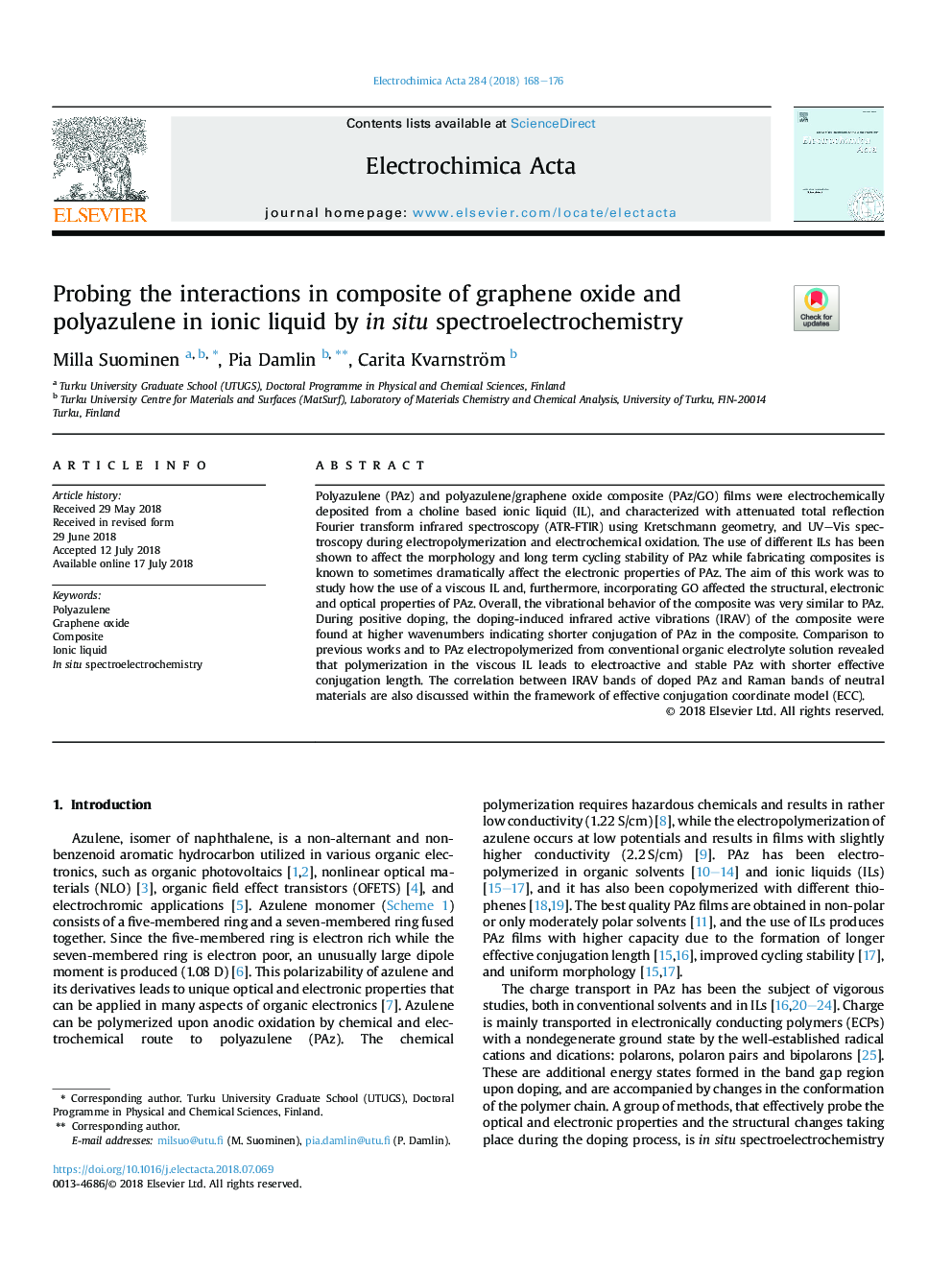| Article ID | Journal | Published Year | Pages | File Type |
|---|---|---|---|---|
| 6601873 | Electrochimica Acta | 2018 | 9 Pages |
Abstract
Polyazulene (PAz) and polyazulene/graphene oxide composite (PAz/GO) films were electrochemically deposited from a choline based ionic liquid (IL), and characterized with attenuated total reflection Fourier transform infrared spectroscopy (ATR-FTIR) using Kretschmann geometry, and UV-Vis spectroscopy during electropolymerization and electrochemical oxidation. The use of different ILs has been shown to affect the morphology and long term cycling stability of PAz while fabricating composites is known to sometimes dramatically affect the electronic properties of PAz. The aim of this work was to study how the use of a viscous IL and, furthermore, incorporating GO affected the structural, electronic and optical properties of PAz. Overall, the vibrational behavior of the composite was very similar to PAz. During positive doping, the doping-induced infrared active vibrations (IRAV) of the composite were found at higher wavenumbers indicating shorter conjugation of PAz in the composite. Comparison to previous works and to PAz electropolymerized from conventional organic electrolyte solution revealed that polymerization in the viscous IL leads to electroactive and stable PAz with shorter effective conjugation length. The correlation between IRAV bands of doped PAz and Raman bands of neutral materials are also discussed within the framework of effective conjugation coordinate model (ECC).
Related Topics
Physical Sciences and Engineering
Chemical Engineering
Chemical Engineering (General)
Authors
Milla Suominen, Pia Damlin, Carita Kvarnström,
